After a month of heavy rain saturated mountainsides, a fresh deluge sent landslides sweeping into Seoul last week, killing 59 people. Ten were still reported missing. In a strange compounding of the misery, the landslides and flash flooding washed away landmines buried near an air defense unit in Seoul. Soldiers were searching for those landmines as well as North Korean landmines washed away near the border. A total of 76 landslides of different severity struck after the most intense rainstorm in Korea in the last century. Ten university students lost their lives while volunteering at a summer camp for kids when a landslide struck in Chuncheon. "If it keeps raining like this, no country in the world can endure this," South Korean President Lee Myung-bak said. -- Lane Turner (25 photos total)

Soldiers remove mud from a landslide-damaged apartment building in Seoul July 28, 2011. (Truth Leem/Reuters)

A landslide covers the street opposite the damaged apartment building in Seoul on July 27, 2011. (Jang Seung-Yoon/AFP/Getty Images)
A rescue worker checks a block of flats after a landslide hit the apartment building in Seoul on July 27, 2011. (Jang Seung-Yoon/AFP/Getty Images) An aerial view shows the flooded Olympic Road next to the Han River after heavy rain in Seoul July 27, 2011. (Yohap News via Bloomberg) Residents on a makeshift raft evacuate from a flooded area in Gwangju, South Korea on July 27, 2011. (Newsis/AP) South Korean army soldiers search for North Korean land mines near the demilitarized zone that separates the two Koreas in Cheolwon, South Korea on July 29, 2011. Parts of North Korean land mines washed up on South Korean shores near the border as troops continued combing the area for other mines that may have been dislodged by deadly landslides and flooding. (Yonhap/AP) 
A road is damaged by torrential rains in Wanju, south of Seoul, on July 11, 2011. (Yonhap/AP)
Workers aboard a boat remove tons of waste that flowed into Lake Chungju in Chungju, South Korea, following heavy seasonal rains July 11, 2011. (Roh Sung-hyuck/Yonhap/AP) 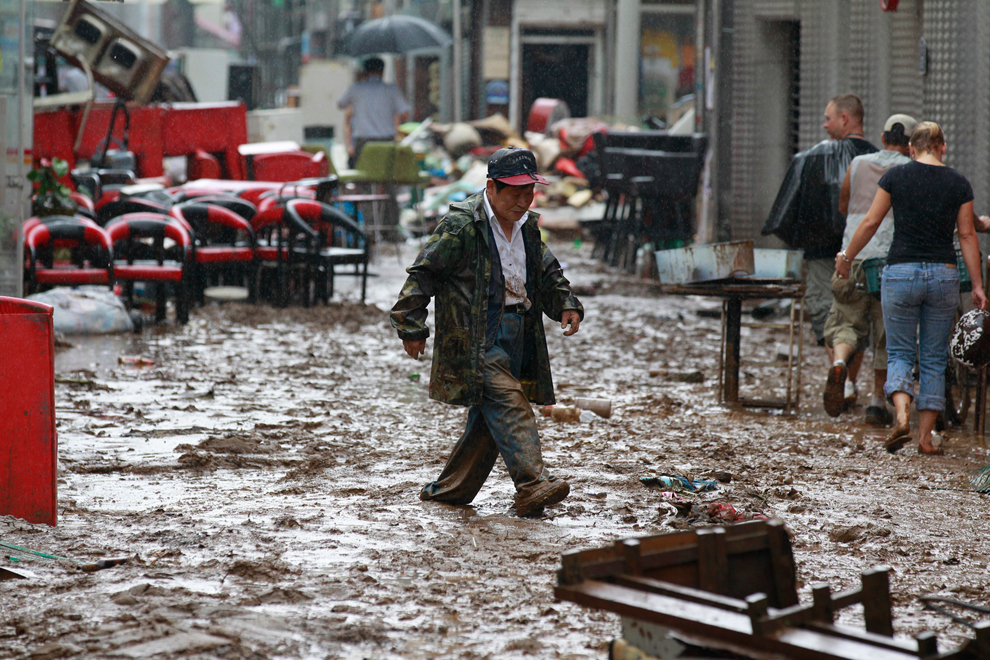
A resident walks in a mud-covered street following a heavy rain near the U.S. military base Camp Casey in Dongducheon, South Korea on July 28, 2011. (Lee Jin-man/AP)
Heavy machines are brought in to restore a road damaged by a landslide in Seoul on July 28, 2011. Thousands of rescuers used heavy machinery and shovels to clear mud and search for survivors. (Ahn Young-joon/AP) A woman sweeps away the muddy water at a bar following heavy rains near the U.S. military base Camp Casey in Dongducheon, South Korea on July 28, 2011. (Lee Jin-man/AP) Vehicles are submerged in floodwater after heavy rain in Seoul on July 28, 2011. (Ahn Young-joon/AP) An owner cleans his tailoring shop near the U.S. military base Camp Casey in Dongducheon, South Korea on July 28, 2011. (Lee Jin-man/AP) A driver gets out of his car on a submerged road in Seoul on July 27, 2011. (Bae Jung-hyun/Yonhap/AP) Residents look out at the flood water after a torrential rain storm hit the capital city on July 27, 2011 in Seoul. South Korea issued a national crisis warning as torrential rain caused flooding in parts of the country, killing over 35 with at least ten missing. (Chung Sung-Jun/Getty Images) Damaged cars pile up after a landslide and heavy rainfall in Seoul July 27, 2011. Wild weather has battered the peninsula, causing widespread flooding and transport delays, while the share price of insurers fell on fears that damage costs would run into millions of dollars. (Park Mun-ho/Newsis/Reuters) Rescue workers evacuate a body after a landslide caused by heavy rains in Seoul July 27, 2011. (Newsis/AP) Residents walk through the debris after a landslide caused by heavy rains in in Seoul on July 27, 2011. (Lee Jin-man/AP) Rescue workers remove a body from a collapsed house after a landslide caused by heavy rainfall in Seoul July 27, 2011. (Kim Ju-Seong/Yonhap/Reuters) Cars are submerged by floodwaters after heavy rains hit the Seoul region on July 27, 2011. (Yang Hoe-Seong/AFP/Getty Images) 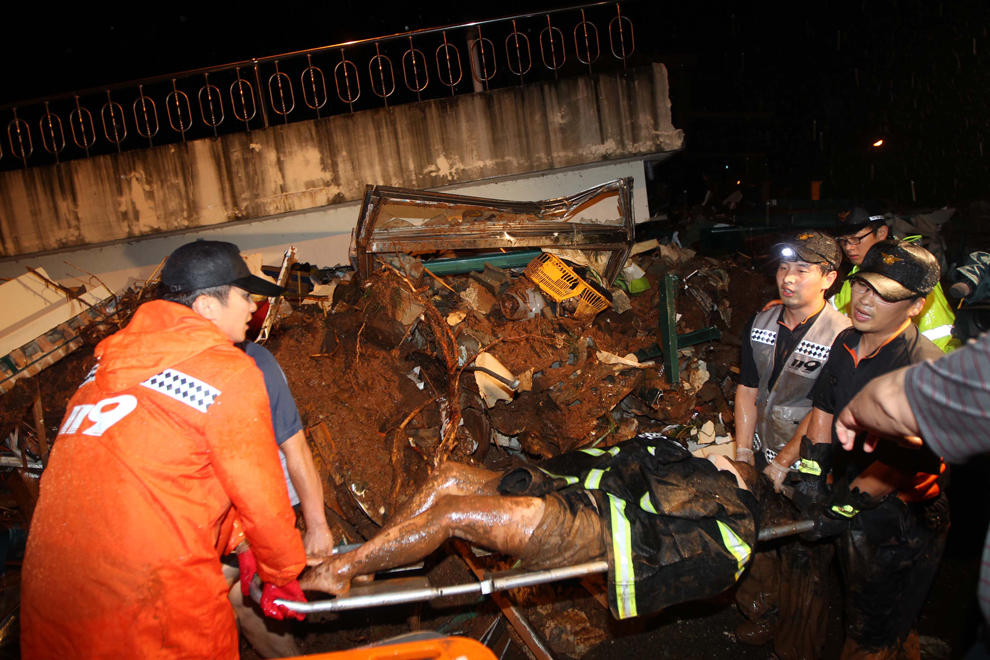
South Korean rescue members carry a victim after a landslide flattened an inn and three homes in Chuncheon, South Korea on July 27, 2011. Nine people were killed and two were missing after a landslide triggered by torrential rain smashed into a South Korean mountainous region. (Yonhap/AFP/Getty Images)
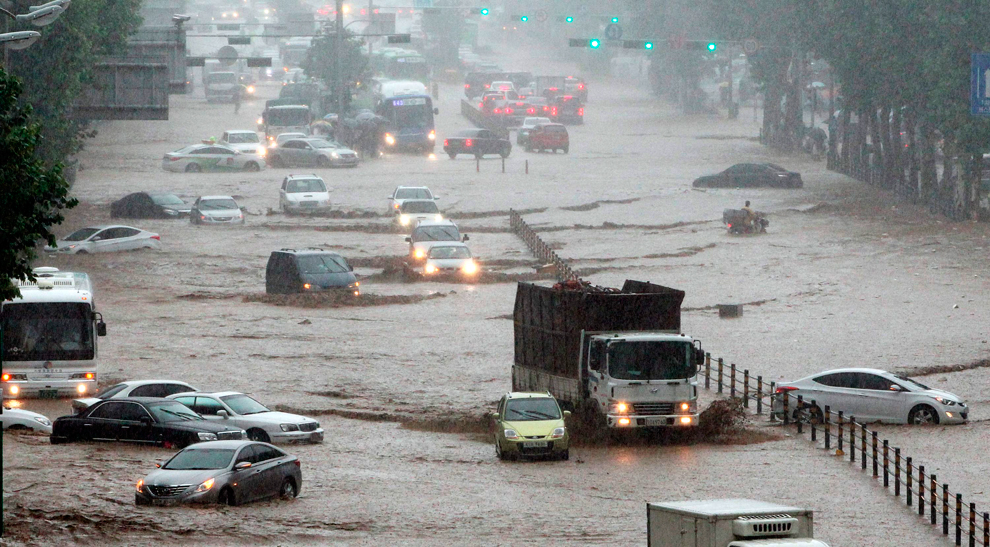
Cars are trapped on a flooded road during heavy rainfall in Seoul July 27, 2011. (Lim Hun-jung/Yonhap/Reuters)
Policemen try to move a trapped car on a flooded motorway during heavy rainfall in Seoul July 27, 2011. (Lee Jung-hoon/Yonhap/Reuters) A bird sits on the top of a flooded bridge at an ecology park in Seoul on July 29, 2011. Torrential downfalls have severely disrupted life in Seoul and its surrounding areas, submerging streets filled with idled cars, flooding subway stations and forcing businesses to shut. (Lee Jin-man/AP) 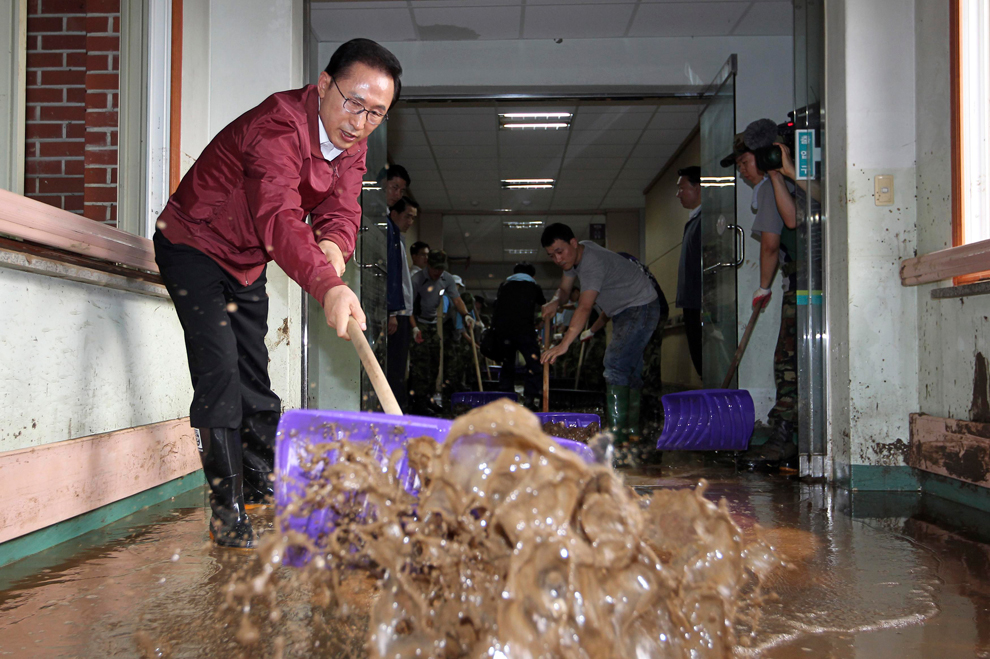
South Korean President Lee Myung-bak cleans mud at a rehabilitation facility damaged by landslides and heavy rain in Gwangju, South Korea on July 29, 2011. (Jin Sung-chul/Yonhap/Reuters)











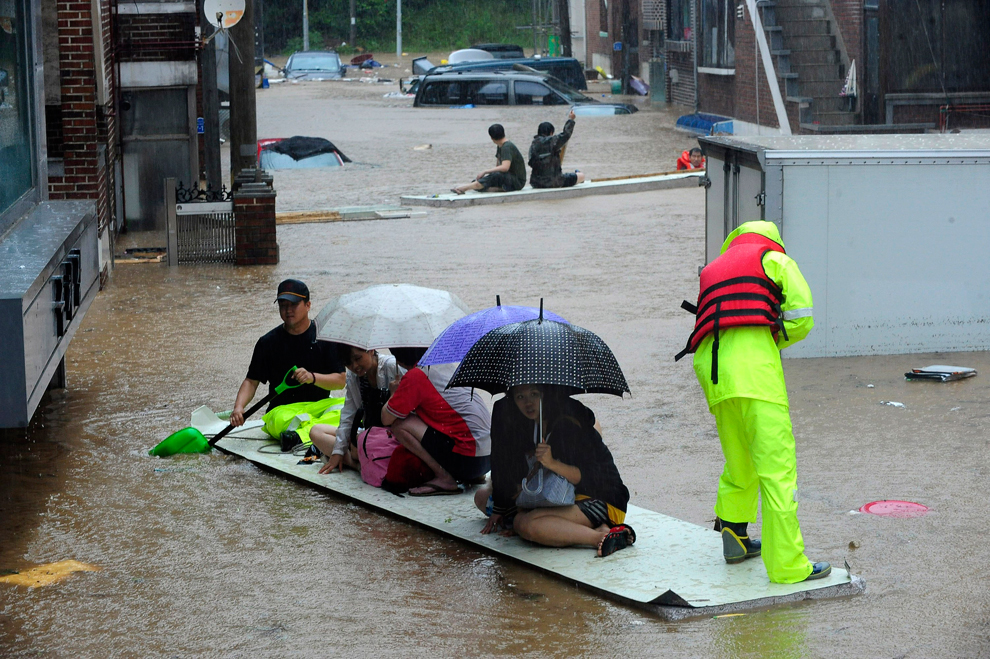



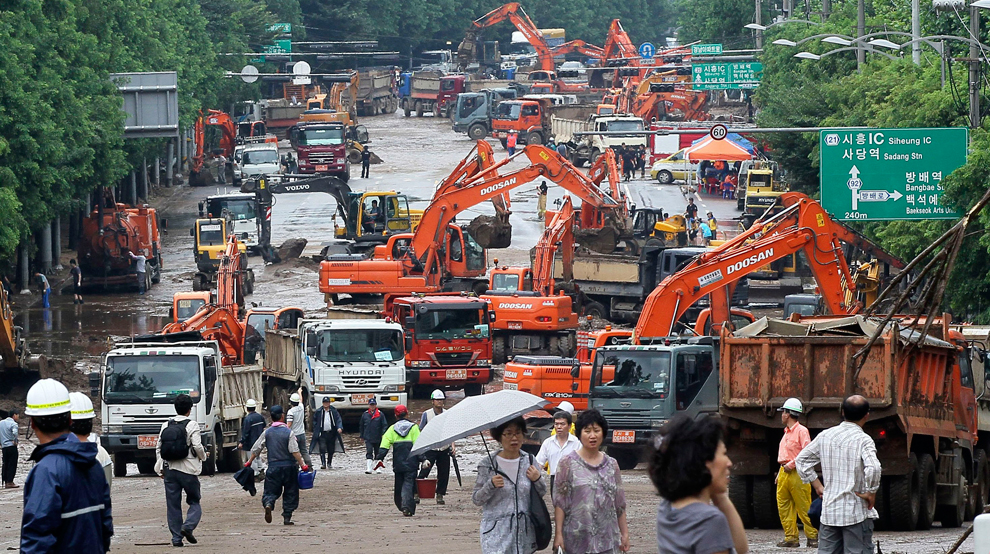
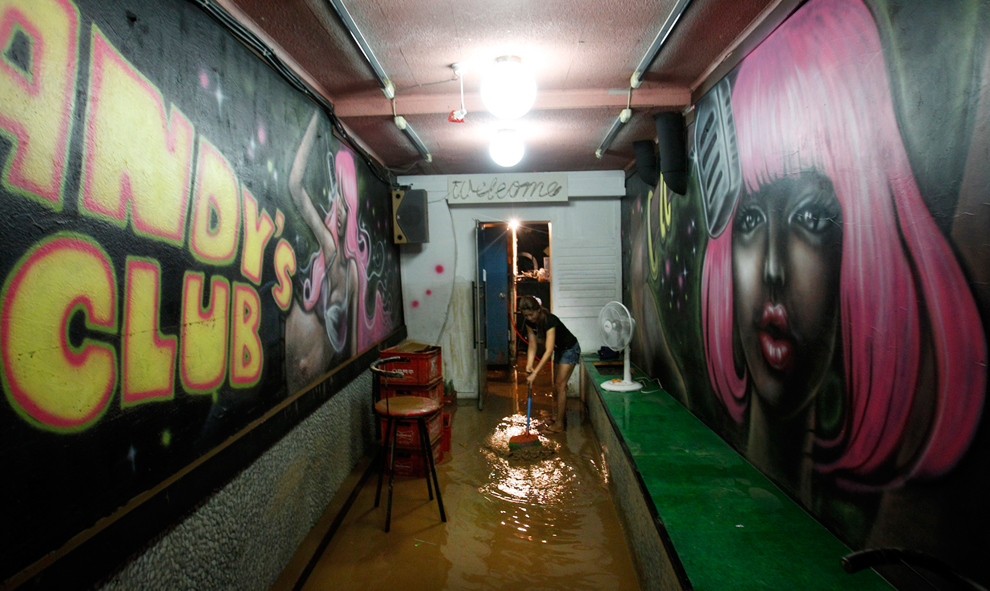
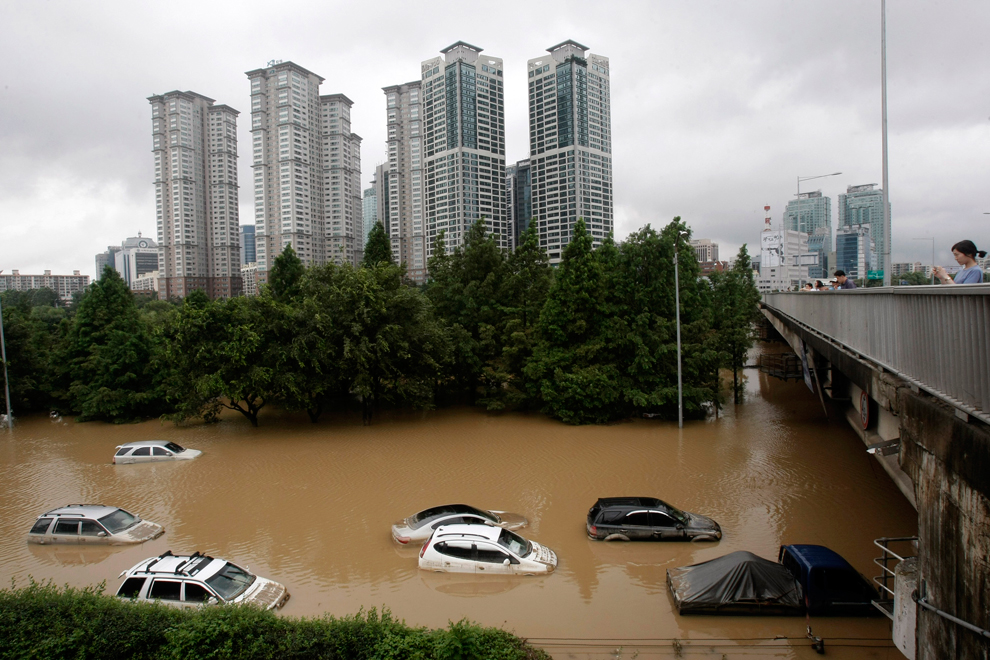
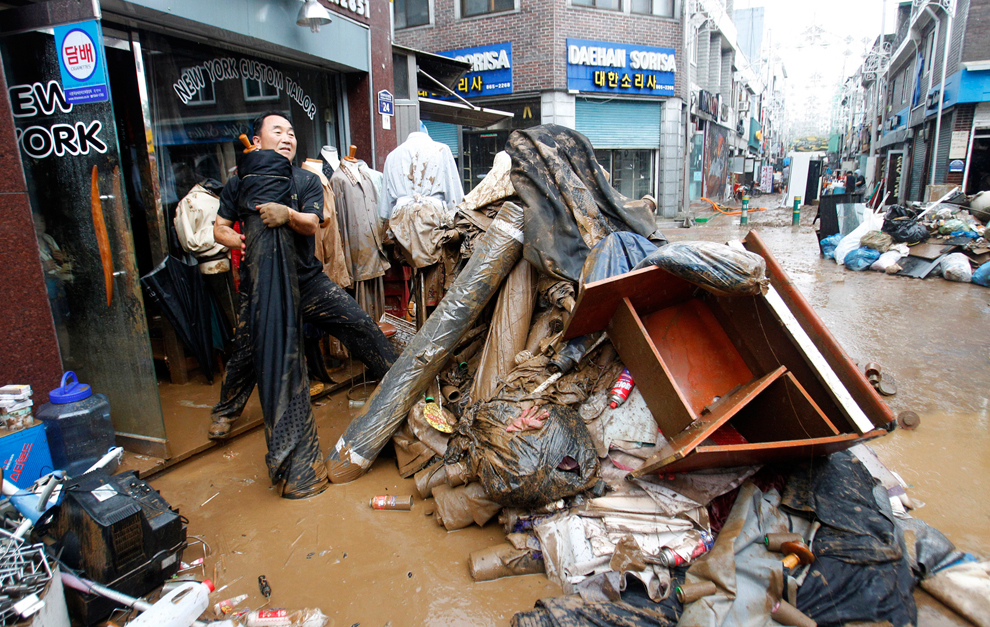
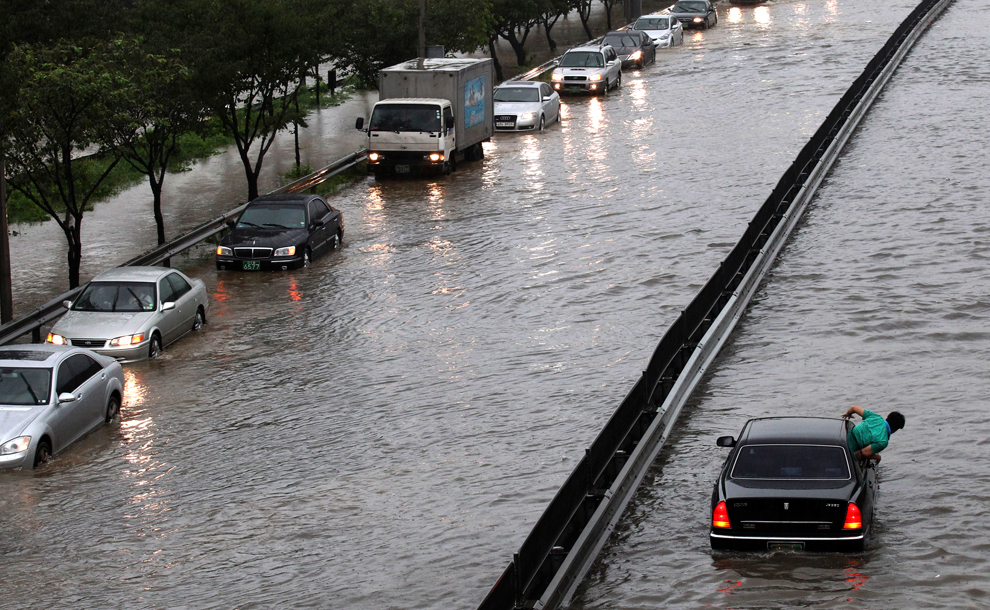
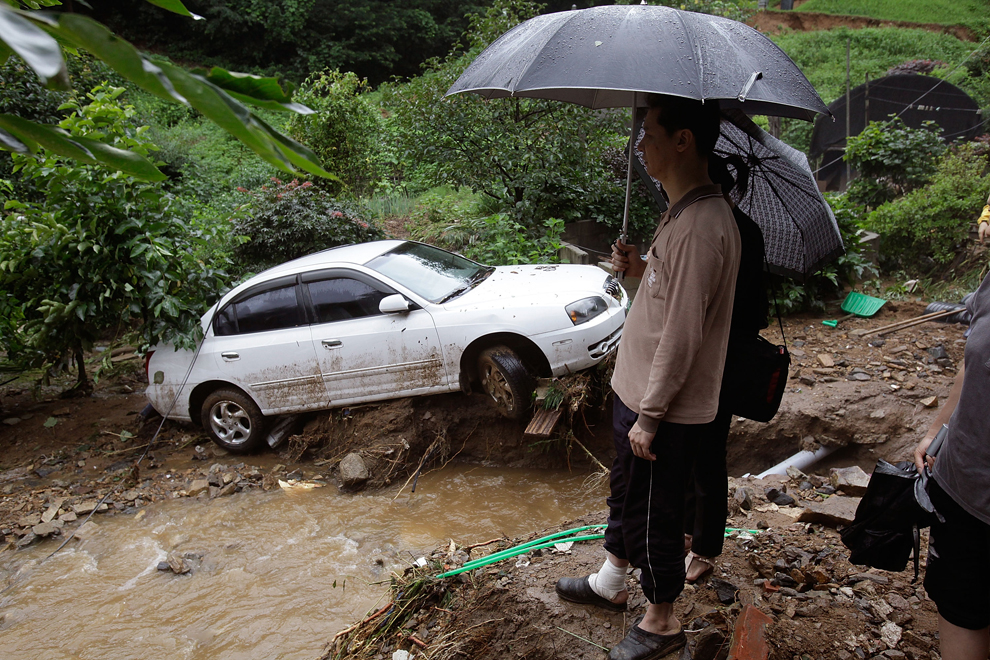
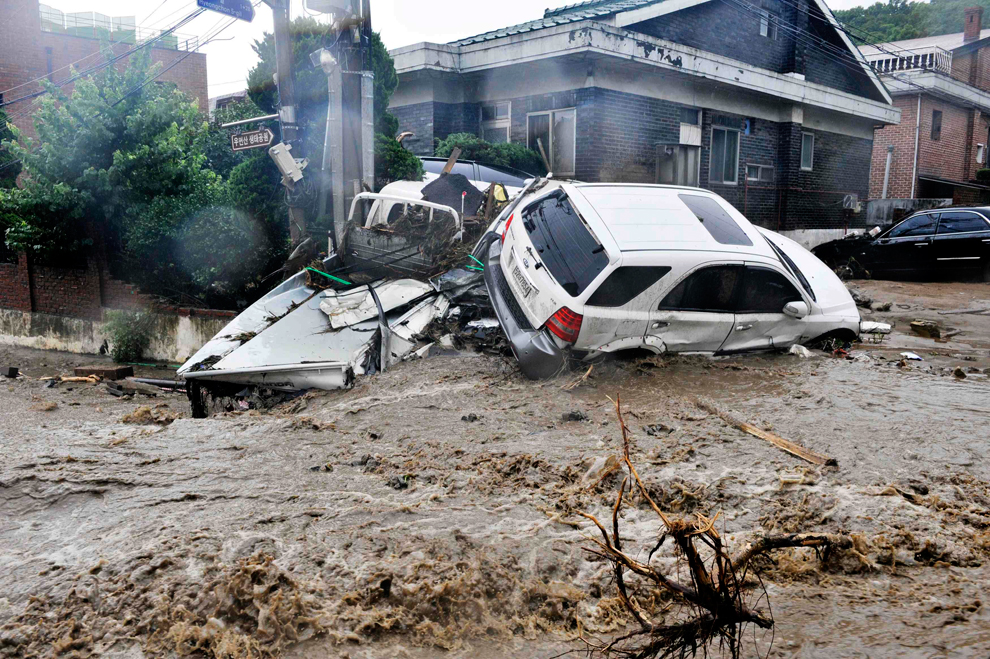
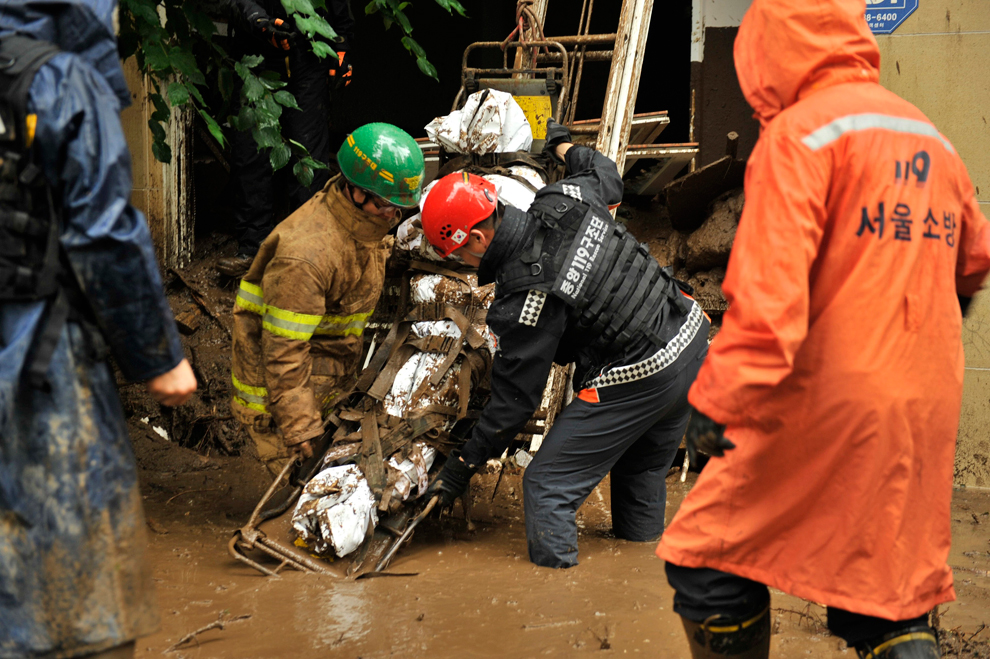
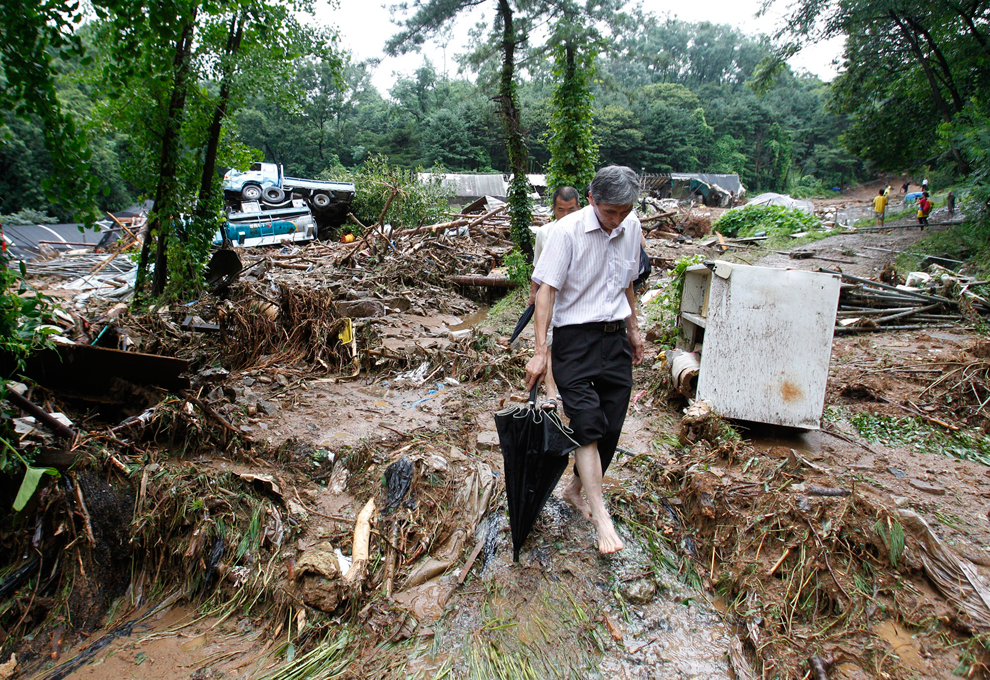
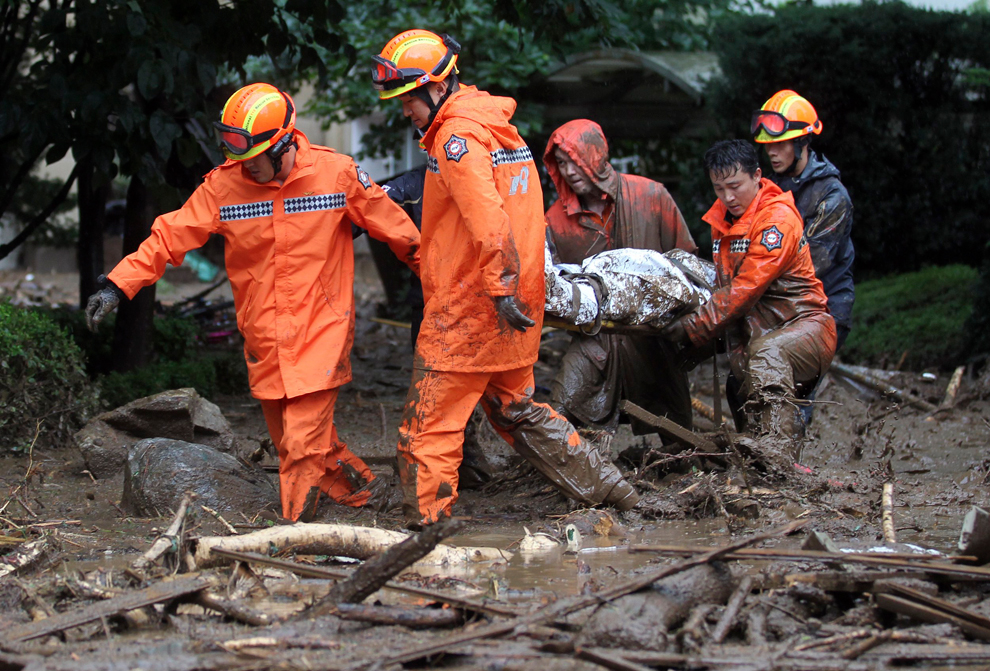

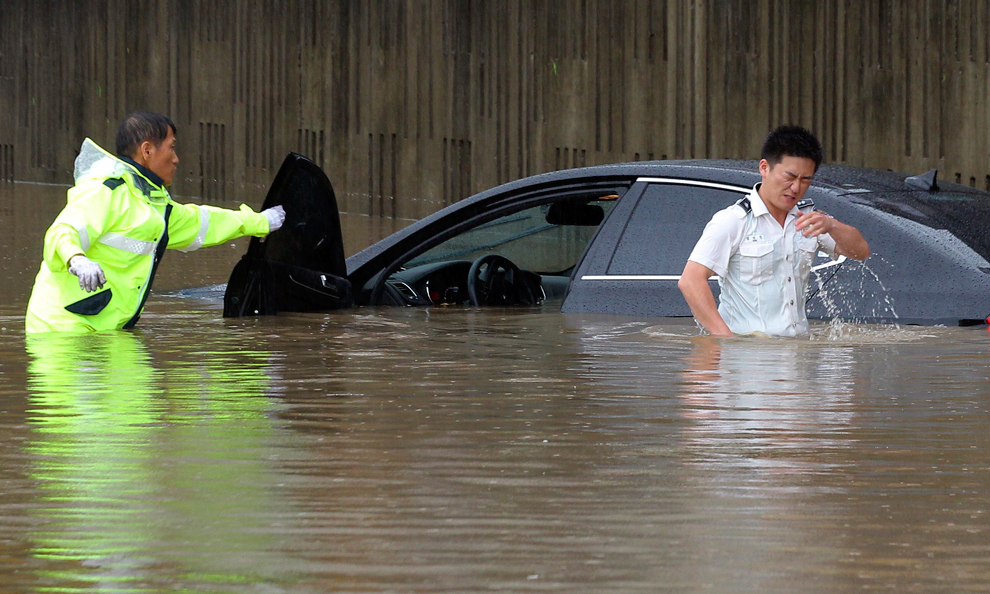
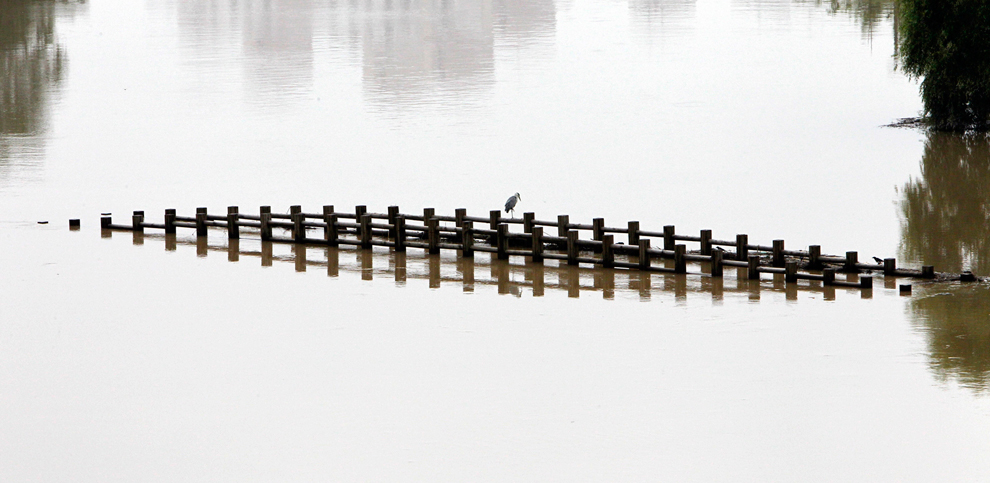

What a worst incident? Really this is a difficult situation to handle.
ReplyDeleteBuy Indian domain